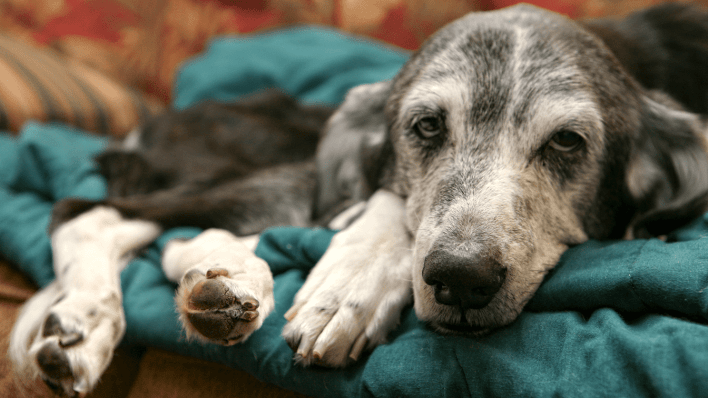Full article with thanks to: ukpets.com/blog/what-is-dog-travel-sickness-and-how-do-you-desensitise-it
Is your pooch not looking so good during a car ride? Instead of wagging his tail in excitement, he looks uncomfortable and a little green? If so, you might need to pull over for a while and take him on a comforting walk since he could be experiencing dog travel sickness. Yup, even dogs may feel queasy whilst travelling in a car.
Dog travel sickness is an ailment believed to be primarily caused by an imbalance of a pooch’s equilibrium when riding inside the car. According to a well-known hypothesis, this ailment is a result of the mixed sensory signals transmitted to the brain.
For instance, your dog’s eyes sense that there is no movement inside the car and then transmits it to his brain. However, his inner ears sense motion. This physiological discomfort can be also caused by the smell of gasoline, oil, or even the car’s air freshener.
Do All Dogs Experience Dog Travel Sickness?
All canines can experience travel sickness, but puppies and younger dogs are more susceptible to this ailment. Therefore, they may experience dog travel sickness more frequently compared to older dogs. The reason behind it is because their ear structures, which are also used for balance, are not yet fully developed.
Luckily, puppies and younger dogs will be able to outgrow dog travel sickness as they slowly inch towards adulthood. Since their ear structures will develop and mature, their sense of equilibrium also becomes more stable.
What Are the Symptoms of Dog Travel Sickness?
Take note of these early signs that your pooch is already feeling uncomfortable inside the car whilst travelling. It may save you the trouble of cleaning up the leather car seats in the future.
- Restlessness
- Yawning
- Whining
- Excessive drooling
- Smacking or licking of lips
- Vomiting
Once your furry buddy starts exhibiting these symptoms of travel sickness, the best solution is to stop the car. Then take your pooch out for a moment so he could breathe and get his bearings back.
Another way to stop a dog’s travel sickness is to open the window so that your pooch can breathe in the fresh air as you drive.
How Do You Desensitise Dog Travel Sickness?
Dog travel sickness is a very stressful ordeal for pet owners and their dogs. To stop any impending car sickness disaster whilst travelling with your pooch, follow these simple yet efficient steps:
Step 1
Start by letting your pooch sit co-pilot beside you in the car. However, since you are still in the early stages of the training, do not start up your car. Just let your pooch settle in. Give your pooch a treat afterwards for a job well done.
Step 2
Once your pooch gets a proper feel of the car, take him outside and play with him. Do step 1 and step 2 for one week, at least once a day and twenty minutes each time.
Step 3
Follow step 1, but this time you must start your car engine. Let it rest in place and have your dog get accustomed to the feeling.
Step 4
Moderately drive your car fifty meters away and then stop at a busy street in your neighbourhood. Give your furry buddy some time to get used to the various noises on the street.
Step 5
Gradually increase the time and distance when you are driving so that your pooch will be able to adapt slowly to the change.
At the beginning of the training, your dog might not want to participate. Therefore, you must gently urge your dog to get inside the car. After a few times, he will be able to manage to go by himself.
It is also important to be very patient and understanding towards your furry companion because it is unavoidable for him to vomit during the first few tries. Therefore, you must refrain from scolding him and instead offer comforting gestures.
Important Tips to Remember:
- Before you start your training, you can place a treat for your pooch inside the car. By doing so, you are encouraging and easing him into getting inside the car. You can also bring his favourite toys or clothes that contain your or your pooch’s scent. This will help lessen your furry buddy’s nervousness.
- If your dog frequently experiences car sickness, he must only eat a small amount of food before travelling. It would prevent him from easily feeling nauseous and lessen the chances of him vomiting.
- Make sure to drive smoothly when you are with your pooch. Avoid sudden braking and driving in bumpy roads if possible to lessen the car’s tendency to shake. Rough driving could further cause stress to your pooch’s body and worsen his upset stomach.
- Not all pooches are suitable for car rides. For instance, newly vaccinated and dewormed dogs are discouraged from any forms of travelling because the process left them temporarily weak and they must rest. Canines that have just finished orthopaedic surgery are also not allowed to go on driving trips. The car might encounter bumps and it could increase the pain the dog is feeling.
Always Be a Comforting Companion
Always keep in mind to comfort and encourage your pooch in the initial stages of the training, since that one is the toughest hurdles he has to overcome. Successfully training your pooch to get used to travelling by car and prevent him from feeling carsick will take some time to achieve, but never impossible.
Full article with thanks to: ukpets.com/blog/what-is-dog-travel-sickness-and-how-do-you-desensitise-it
Did you enjoy that? Why not share this article.
We offer free advice on pet travel within or outside the UK, so whether you’re looking for worldwide pet travel services or European travel – we give you our honest, expert advice.
If you choose us for pet travel, don’t worry – your animal companion will be in safe hands from start to finish.

